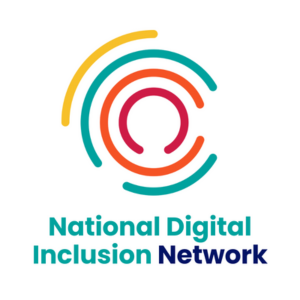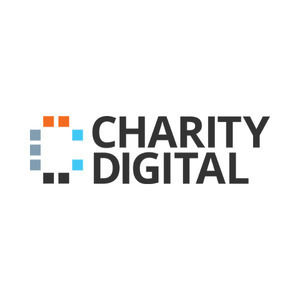Insights
INSIGHTS
All Topics
What are the causes and impacts of digitalisation?
Digital technology defines our time. How has this happened and what does it mean for people’s lives?
Click to listen to articleplay_arrow08:33
Digital technologies have advanced more rapidly than any other innovation in our history. And while their impacts can include promoting fairness, peace, and justice, they can also exclude people, fuelling inequality.
Approaching digitalisation in an equitable way is of concern to charities, who are driven to improve lives, benefit society, and create a better world. In this article, we explore why digitalisation has happened and what it means for people who are experiencing digital exclusion.
How digital went mainstream
The history of the internet explains why it is so central to our society today. In the 1970s, a number of people started using home computers, eager to join the “Information Revolution”. In the mid-1980s, the popularisation of email and other developments led to a greater increase, while in the early 1990s, the launch of web browsers meant that non-academics could now use computers and the internet.
The economic possibilities of the internet are also a key reason for its expansion, with the earliest example being the “dotcom bubble”: a flurry of excitement and investment in the IT industry between 1998 and 2000, which laid the groundwork for future ecommerce success.
The internet became a staple in most people’s lives during the 2000s, with the arrival of broadband, new kinds of online entertainment, social media, and smartphones.
The development of digital society and services in the UK
Public services shift online
Since 2011, the UK Government has implemented a strategy promoting ‘digital by default’ public services, which was considered more cost-effective for government and more efficient for users. It focused on digitalising transactional services such as applications, tax, licensing, and payments.
Though the strategy sought to ensure that those who were unable to access the services online would not be disadvantaged, that has not been the case in practice, according to The British Academy.
In the example of social security, it can be a complex online process to prove eligibility and maintain a claim over time as personal circumstances change, particularly for those who lack connectivity or digital skills. This means it can be harder for digitally excluded people to receive the social security payments they are entitled to.
Other necessities digitalise
Other day-to-day necessities being digitalised include banking, as highlighted by Age UK in their ‘Offline and Overlooked’ campaign.
The House of Lords reports that significant numbers of bank branches have closed since 1986 due to consumers’ changing habits and technological changes. It highlights that among the groups affected are people with disabilities, older people, and people living in rural areas.
Banking hubs are an emerging solution welcomed by Age UK, and in December 2023 there was consensus among political parties to speed up their launch in communities.
Work life has also gone digital: 92% of UK employers say that having basic digital skills is important for employees at their organisation, according to research by the Learning and Work Institute. Meanwhile, 7.5 million people, or 18% of UK adults, lack the essential digital skills needed for the workplace, according to Lloyds Bank’s Consumer Digital Index.
The Learning and Work Institute report that when it comes to ICT training at all levels, and employment in the digital sector, there are “stark” gender and geographic inequalities. It also highlights the role of affordability, with one in ten young people lacking access to an appropriate digital device on which to do their homework and build their skills, later impacting their employability.
The pandemic speeds up digitalisation
In 2020, digitalisation in the UK accelerated rapidly with the beginning of COVID-19 measures. Lockdowns and social distancing meant that public services, working practices, and education suddenly relied heavily on the digital world, worsening the digital divide in a number of ways.
Exploring the long-term impacts of COVID-19 upon digital exclusion, The British Academy found that digitally excluded children and young people were particularly impacted. This is due to limited access to learning resources, leading to lost access to education, and worsening existing socioeconomic inequalities.
Digitalisation impacts society
With the use of digital devices and platforms spreading vastly since their invention, society itself has changed and shifted. Digital technology has transformed how many people consume media, engage with politics, and even how they interact with friends, family, and strangers.
Inequalities are caused by digitalisation when technologies are rolled out in unjust ways, and when data is collected about citizens that they do not know or understand. One example is police uses of facial recognition technology, which in the UK have been found to infringe on citizens’ privacy rights and have raised concern about racial bias.
The digitalisation of society has also propelled the spread of false and misleading information, dividing societies and threatening health and wellbeing.
Those who can’t use digital technology are excluded from engaging with social life online. Not being able to communicate with friends and family can cause isolation, while something as simple as not being able to play the same online games as school friends can cause social barriers for children who don’t have digital access.
Finding the balance
Digital technology has also had many positive impacts. It can help people connect with others, express themselves, find health information, and can support relaxation, leisure, and learning. They can play a role in people staying informed about current events, and creating social and political change.
According to Pew Research Centre, social media has made 45% of users in 19 countries more accepting of people from different ethnic groups, religions, and races. In the UK, it found that one in nine people see social media as an effective way to raise public awareness about socio-political issues.
Digital technologies can also help organisations support health, wellbeing, and equality, when used in particular ways. For example, charities working with limited resources can employ digital technology to automate certain tasks, allowing staff to spend more time on delivering their much-needed services. In some cases, the services themselves are enhanced by digital tools.
Digital technology is a defining feature of the world today, impacting people everywhere whether or not they use it directly. And (for now at least) digital technologies don’t have a mind of their own: how they impact people’s lives all comes down to how we choose to use them.
Find out more
Download the full report below
Josie Sparling
More on this topic
Recommended Products
Recommended Products
Featured Products
Our Events
Charity Digital Academy
Our courses aim, in just three hours, to enhance soft skills and hard skills, boost your knowledge of finance and artificial intelligence, and supercharge your digital capabilities. Check out some of the incredible options by clicking here.


















